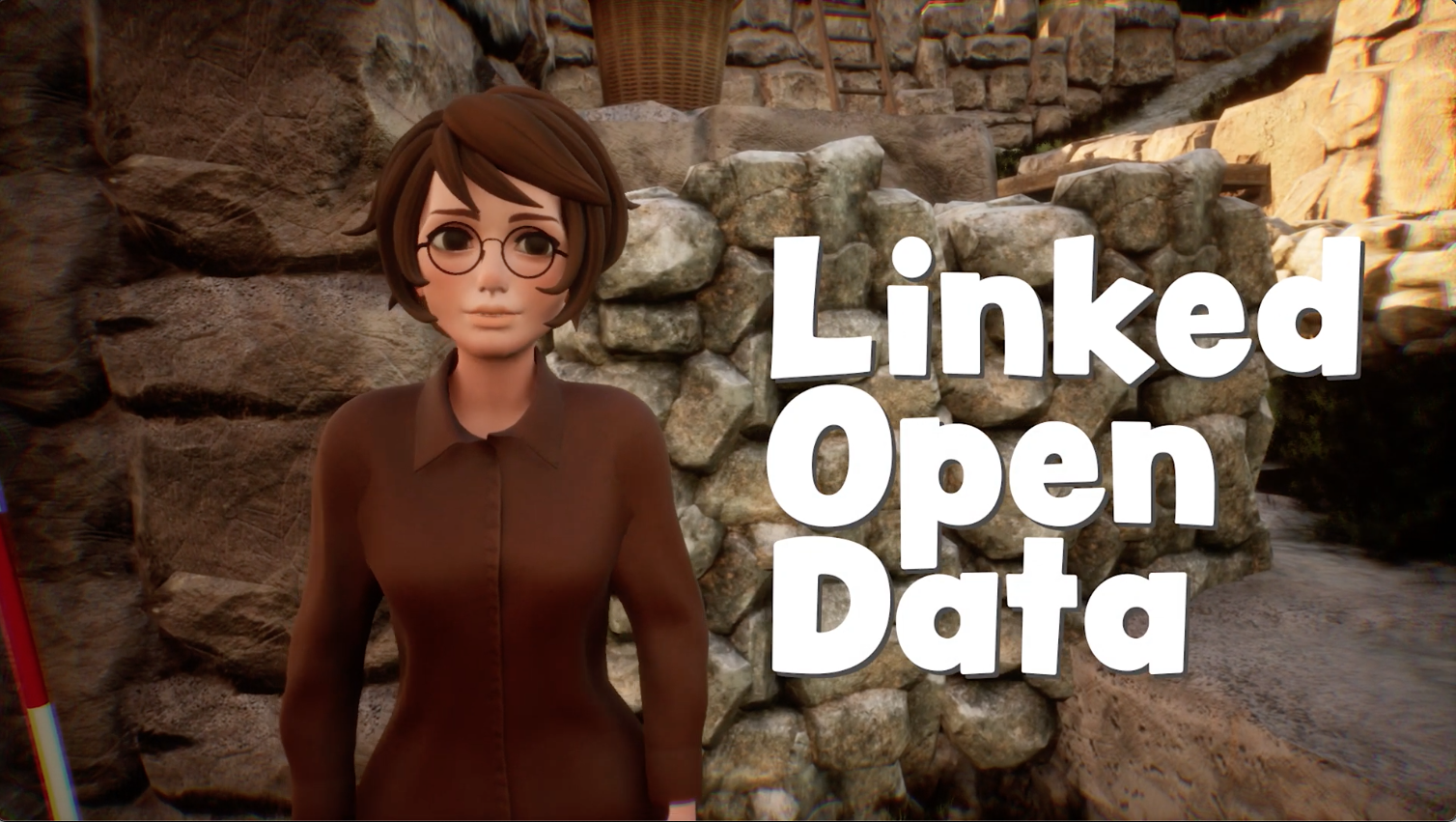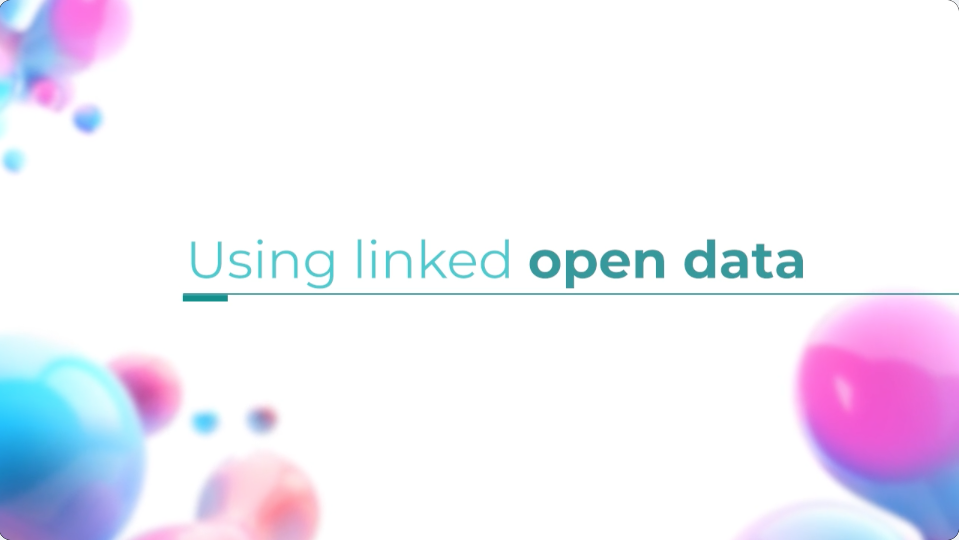Use 'Print preview' to check the number of pages and printer settings.
Print functionality varies between browsers.
Printable page generated Thursday, 27 November 2025, 12:23 PM
What is open research?
Introduction

What is open research? There are many different definitions, and these may vary from discipline to discipline and across research methodologies. Here are a couple of examples:
Open research … relates to how research is performed and how knowledge is shared based on the principle that research should be as open as possible.
Researchers around the world, in all disciplines, store, share and reuse their outputs with the wider community, so everyone can access insights and knowledge much sooner, helping to advance their work and support reproducibility.
Simply, open research is a way of doing research that focuses on being transparent, honest, and thorough. It's about making sure that all the steps of a study are clear and accessible, so that other researchers can understand, verify, and build upon the methodology and findings. It is an open door to research evidence, where everyone can see what's available and contribute to the collective pool of knowledge.
No matter what your career stage, it is important to learn about how open research applies to your discipline, so that you can better assess the quality of research in your field and conduct more open research yourself. By the end of this course, you will have a good understanding of the principles underlying open research, and a set of practical techniques you can use to translate these abstract principles into action.
Press ‘Next’ at the bottom of this page to take your first step!
Examples of open research projects
To give you an idea of what open research can look like, here are some examples. It is a good idea to open these in a new tab or window (right mouse click or long press), so you can easily return to this page:
Example 1: The International Virtual Observatory Alliance (IVOA) is an impressive project in astronomy. IVOA is a framework that allows astronomical data to be shared and accessed globally. Over the years, the IVOA has developed standards and protocols to facilitate the seamless integration of data from various observatories, making it available to the global community. Have a play around with ESA Sky (built on IVOA protocols) yourself!
Example 2: The mRNA Vaccine Technology Transfer Hub is an innovative project in the field of biotechnology and global health. Established by the WHO (World Health Organization) to facilitate the widespread production of mRNA vaccines, this hub provides training, resources, and support to manufacturers in low- and middle-income countries. This openness enables a broader range of producers to develop mRNA vaccines, helping to combat pandemics and improve global health security.
Example 3: The Education Endowment Foundation (EEF) funds rigorous, high-quality evaluations of educational interventions. They are conducted by independent evaluators rather than the team that initially developed the intervention. All studies are registered ahead of time and the evaluation protocol is published in advance. All study findings are published on the EEF website, regardless of the outcome of the study.
Example 4: The Pelagios Network is an inspiring example from the humanities. It is a community of researchers, data scientists and curators who use linked data methods and tools to investigate the past. Their interests are wide-ranging (history, language, archaeology, conservation, etc.) and span the field of cultural heritage, including universities, galleries, libraries, archives and museums. There’s more on this project in the next section.
Spotlight: the Pelagios Network
The Pelagios Network uses linked open data to share information and support collaboration between scholars. The basic idea of linked open data goes back to the pioneers of the World Wide Web. It is a powerful way to freely use and distribute information.
Throughout this course, we use videos to present perspectives on open research. Take a little time to write notes on these videos: you can download your notes at the end of the course.
Our first video, funded by AHRC and created by Too Tall Productions, takes you on a whistle-stop tour of how the Pelagios Network uses linked open data. As you watch, think about why this has the potential to be a great tool for research.

Transcript: Video 1: Linked open data, what on earth is that?
Now listen to Professor Elton Barker, classicist and co-founder of the Pelagios Network, to get the backstory. He talks about the very first attempts at collaboration, and how linked open data has helped him with his own research. As you watch the video, think about how this kind of resource could also help with other types of research.

Transcript: Video 2: Using linked open data
Use this box to write what you have learned from both videos. How does the Pelagios Network use linked open data? What are the particular features of linked open data that Prof. Barker believes are most useful for scholars?
Allow about 10 minutes for this.
When you are ready, press 'reveal' to see our comments.
Discussion
The Pelagios Network researchers are interested in Greek objects and texts. Even if you come from a very different discipline, you should still be able to recognise how linked open data allows researchers in different institutions to collaborate, enriching the amount of data they can all access. The data is organised in a systematic way and given permanent identifiers, so the information can be scrutinised from different perspectives, and reused by researchers in other institutions or disciplines.
So far in Week 1, you have been introduced to five examples of open research projects from astronomy, medicine, education and the humanities. What do these disparate projects, from very different academic disciplines, have in common? To a greater or lesser extent, they all share some foundational principles. In this course open research will be broken down into three key facets that span across disciplines: transparency, integrity, and accessibility. Let’s start with transparency.
Transparency
The principle of transparency in research refers to the practice of being open and honest about all aspects of the research process.
In the TV show, Great British Bake Off, contestants compete in a UK-wide baking competition. In some tasks bakers are assessed on their creativity and flavour combinations, but in the show’s ‘Technical challenge’ they all have to follow the same recipe and make the same thing. Simple, right? Well, if it’s so simple, then why are there so many soggy bottoms?
Technical challenge instructions:
- Make the cake batter
- Bake the cake
- Ice the cake
Even when a recipe is provided, there can be a lot missing. In the technical challenge above, the instructions do not specify which ingredients should go into the cake batter, in what order they should be added, or how long the cake should be baked. A recipe for disaster!
A similar issue occurs in many academic research papers. Researchers describe what they did, but often not in enough detail for someone else to clearly understand what was done, or to repeat the study themselves. This means that another researcher hoping to reproduce the study may not able to reproduce it accurately. This is referred to as a study’s replicability.
Similarly, why are there so many amazing looking cakes on Pinterest, which become ‘Pinterest fails’ when people try to make them at home?

Sometimes it might be because the person sharing the beautiful picture of their cake tried thirty times before one turned out right, but fails to mention this, and instead tells readers how easy it was to make!
Similarly, researchers can fail to disclose versions of studies that they have tried, but that in their view didn’t ‘work’, choosing instead to share results from those studies that had the results that they desired.
What are all the things you could include in a recipe to give the baker the best chance of success? Make a note in the box below. Try to think of at least five before revealing the answers below.
When you are ready, press 'reveal' to see our comments.
Discussion
The details will differ from person to person. In your answer, you might have included things like: pictures of each step, temperature of the oven, ingredients, length of baking time, size of tin, order of adding ingredients, how long to mix, and possible substitutions. It is likely that the details you included are those that will help determine whether your cake looks like the cat cake on the left, or the cat cake on the right. In the same way, researchers are more likely to be able to get the same result as other researchers if they can follow clear instructions on how to conduct the study.Integrity
The principle of integrity refers to the degree of trustworthiness or believability of research findings. So, a transparent study is trustworthy and believable, right? Not necessarily! Transparency can be considered to be necessary, but not sufficient, for assessing integrity. Being transparent about how a study was done enables other researchers to better assess whether the study has integrity.
If you let your friend taste a cake you’ve made, but don’t tell them any of the ingredients that went into it, they might have a harder job working out why they do or don’t like it than if they know what went into it. For example, if they liked that the cake tasted citrussy, they would not know that was because of the grapefruit zest in the ingredients list (rather than maybe lemon juice or citric acid).
Now let’s assume you have been completely transparent about your ingredients. Can you think of any circumstances where there could still be doubts about your integrity? Make a note in the box below.
When you are ready, press 'reveal' to see our comments.
Discussion
Even if you’ve been completely transparent about your baking process (including the ingredients), you may not have been honest about the results of your baking. You could have made unsubstantiated claims about your cake’s health benefits, or implied that it doesn’t contain allergens that are usually found in cakes. If so, you have shown transparency, but the integrity of your work could still be open to challenge.
There are lots of different ideas about what gives research findings integrity, and this will vary greatly depending on the field and research methodology. One important distinction is between qualitative and quantitative methodologies. In the next section, you’ll find out how this can fundamentally affect how researchers think about integrity.
Quantitative research
Quantitative research deals with numbers, aiming to quantify phenomena and establish patterns or relationships.
A quantitative researcher interested in baking might be interested to know how many chocolate chips are needed to make the most delicious chocolate chip cookie. They decide to make three batches of cookies: one where each cookie has five chocolate chips, one where each has ten chocolate chips and one where each has fifteen chocolate chips. They ask participants to eat one of each cookie type and rank each cookie type from 1 (worst cookie) to 3 (best cookie). In other words, the researcher uses numerical (quantitative) data to work out how to make the most delicious cookie.
When conducting quantitative research, researchers often try to remove themselves as much as possible from the research, aiming for objectivity (although there is considerable debate about whether this is possible!). As such, quantitative researchers believe that the replicability of a study is of the utmost importance for that study to be considered to have integrity. This means that when another researcher conducts the same study, they should get the same results.
Qualitative research
Qualitative research focuses on understanding qualities, meanings and contexts through non-numerical data like words, images or observations.
A qualitative researcher interested in how to make the most delicious chocolate chip cookie would take a different approach to the quantitative researcher. They might ask participants to describe the best and worst chocolate chip cookies they’ve ever eaten, and what they liked or disliked about them.
In qualitative research, objectivity is seldom desired or even considered possible. Instead, subjectivity is embraced explicitly, and researchers may include their own perspectives when writing up their papers. They wouldn’t necessarily assume that if someone else conducted the same study they would get the same results due to the complex interplay between the context of the participants and unique positionality of the researchers.
So qualitative and quantitative researchers often have different opinions about whether a study needs to be replicable in order to have integrity.
It’s important not to assume that there’s only one way for research to have integrity, and to understand the importance of different ways of doing research. The cheesecake below might look burnt to someone who is used to non-baked cheesecakes, but will look perfect to someone who is used to baked cheesecakes!

Activity 1:
Allow about 10 minutes
In the activity below, you will have the chance to test your understanding of the terms ‘transparency’ and ‘integrity’ in open research. Read the following vignette, and decide whether it is an example of research that has transparency, whether it has integrity, transparency and integrity, or neither?
Dr. McGonagle is conducting a study on the effects of a new drug on psoriasis. She publishes her methodology, including how participants were selected, how the drug was administered, and how data were collected and analysed. She also shares her raw data and statistical analysis code publicly, allowing others to verify her results or conduct their own analysis. She clarifies in her methodology that she isn’t planning on comparing the new drug to anything else. Make a note of your thoughts in the box below before revealing our comments.
When you are ready, press 'reveal' to see our comments.
Discussion
Dr. McGonagle has been transparent by publishing all the details of her study. However, the results from her research will show less integrity because she hasn’t compared the new drug to anything else. To increase the integrity of her research, she could compare the new drug to an existing drug and/or a placebo.
Accessibility
The principle of accessibility refers to ensuring that all who are interested are able to consume, evaluate, and otherwise interact with research products (e.g. data, results) and processes (e.g. methods). Even when research is transparent and has integrity, if only a limited group can access the outcomes or outputs of this research, it is not truly open.
Asking people to pay to read a hidden recipe for the best cake ever means that only certain people will be able to afford to make it. This may not seem like the end of the world for cake, because cake is a luxury. We might even hope that the reason the recipe is behind a paywall is so that the author of the recipe can be paid for the hard work they put into developing it, as well as covering the costs to the website of editing and hosting the content. However, research is a bit different.
One reason for this is that the outputs of research are not a luxury, as research is used predominantly to solve the world’s problems! Another reason is that much research is publicly funded, meaning the public has a right to access the products of this research. Also, when research is behind a paywall (e.g. published in a journal where you have to pay to access articles), authors don’t get any of the money that people pay to read the article.
If authors want to make their article openly available to everyone, they usually have to pay for this themselves. That’s like a recipe creator either having to pay to have their recipe openly listed on a website, or the website charging for people to read the recipe which the recipe creator gave them for free.
Accessibility is about more than just making the products of research available for free. Even if all research articles were free to read, if the public isn’t able to understand them, then they are useless! Converting a complicated recipe into bullet points, adding hints and tips, and translating it into different languages or adapting it for different accessibility needs, will mean that many more people are able to make the same recipe than if only the original version is provided.

Pause for thought
To publish an article openly in the famous journal Nature, researchers have to pay almost £9,000 (in 2024, at the time of writing). Take ten minutes to reflect on how APCs affect researchers in the Global South, and how journals might address this. Then, look up whether Nature has any ways of addressing this (clue: search for ‘APC waiver’).
Quiz

So far, we have introduced three principles that are considered to make research open. How much have you learned?
Throughout the course, we will offer you self-test quizzes to help you to test your understanding of the course concepts. These quizzes are there to help you consolidate your knowledge. It is important to check your answers and read the feedback we have written. This will help you to develop your own understanding.
Summary
So far, we have briefly introduced the principles of transparency, integrity, and accessibility in open research. You’ve learned that these are all aspects of open research, and how they can interact with each other.
As you progress through the course, you will explore these different principles of open research in more depth, across disciplines and research methodologies. You will learn how to apply them to your own research. In the final week, we will talk about ways you can commit to open research and get involved in different open research communities.
Whatever branch of research you are in, and wherever you are in your research career, we hope you will find this course useful, and applicable to your own work. Next week, we will take a deeper dive into transparency.
References
Barker et al (2024): Digital Periegesis (GAMA)
Available at: https://www.periegesis.org/ en/ articles.php?acid=1
Driver et al (2009): GAMA: towards a physical understanding of galaxy formation, Astronomy & Geophysics, Volume 50, Issue 5, pp. 5.12-5.19.
Available at: https://academic.oup.com/ astrogeo/ article/ 50/ 5/ 5.12/ 194415
EEF (2024): A School’s Guide to Implementation
Available at: https://educationendowmentfoundation.org.uk
Farran, E. K., Silverstein, P., Ameen, A. A., Misheva, I., Gilmore, C.: Open Research: examples of good practice and resources across disciplines
Available at: https://osf.io/ preprints/ osf/ 3r8hb
GAMA Team (2024): The Galaxy and Mass Assemby (GAMA)
Available at: https://www.gama-survey.org/
Hanisch, R and Quinn, P (2003): The International Virtual Observatory
Available at: https://www.ivoa.net/ about/ TheIVOA.pdf
International Virtual Observatory Alliance (2024): The Virtual Observatory (IVOA)
Available at: https://www.ivoa.net
Pelagios Network (2024): The Pelagios Network
Available at: https://pelagios.org
Pelagios Network (2024): What is linked open data?
Available at: https://pelagios.org/ linked-data
UKRI (2025): Ensuring Open Research
Available at: https://www.ukri.org/ what-we-do/ supporting-healthy-research-and-innovation-culture/ open-research/
Wellcome (2025): What is Open research?
Available at: https://wellcome.org/ what-we-do/ our-work/ research-enviornment/ open-research
WHO (2024): The mRNA vaccine technology transfer hub
Available at: https://www.who.int/ initiatives/ the-mrna-vaccine-technology-transfer-hub
Glossary
- Accessibility
- The principle of Accessibility refers to ensuring that all who are interested are able to consume, evaluate, and otherwise interact with research products (e.g. data, results) and processes (e.g. methods).
- Credibility
- The principle of credibility refers to the degree of trustworthiness or believability of research findings.
- Linked open data
- A set of design principles for sharing machine-readable interlinked data on the web, allowing open data to be freely used and distributed.
- Integrity
- The principle of integrity refers to the degree of trustworthiness or believability of research findings.
- Paywall
- A barrier to content where only those who have paid a subscription fee or made a one time payment can access the content.
- Qualitative research
- Focuses on qualities, meanings and contexts through non-numerical data like words, images or observations.
- Quantitative research
- Deals with numbers, aiming to quantify phenomena and establish patters or relationships.
- Replicability
- A study is replicable if, when another researcher conducts the same study, they get the same results.
- Transparency
- The principle of transparency in research refers to the practice of being open and honest about all aspects of the research process.